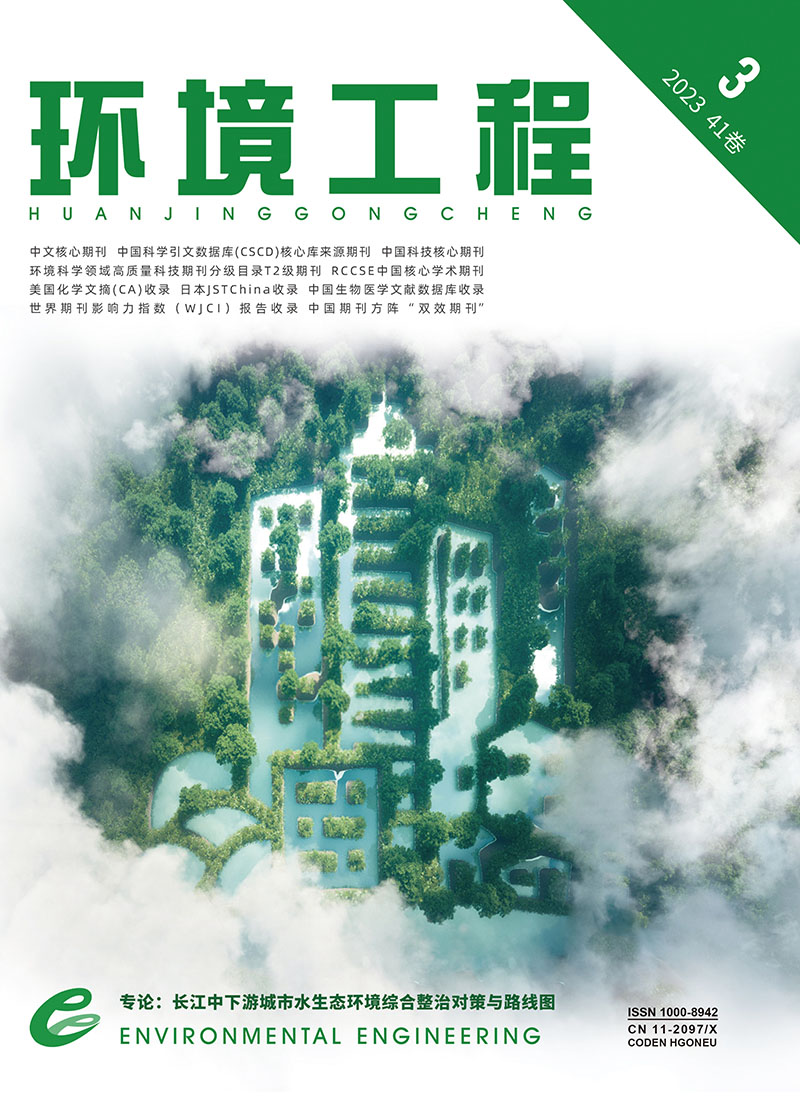| [1] |
SINGH N J, WAREPPAM B, GHOSH S, et al. Alkali-cation incorporated and functionalized iron oxide nanoparticles for methyl blue removal/decomposition[J]. Nanotechnology, 2020, 31(42):125867-125908.
|
| [2] |
PUTRI R A, SAFNI S, JAMARUN N, et al. Kinetics study and degradation pathway of methyl orange photodegradation in the presence of C-N-codoped TiO2 catalyst[J]. Egyptian Journal of Chemistry, 2019, 62(2):563-575.
|
| [3] |
SHABANI S, DINARI M. Itaconic acid-modified layered double hydroxide/gellan gum nanocomposites for Congo red adsorption[J]. Scientific Reports, 2022, 12(1):4356-4368.
|
| [4] |
赵雅兰, 陈启杰, 谢琼华,等. 淀粉基化学品用作吸附剂的应用研究进展[J]. 工业水处理, 2021, 41(7):19-24
,33.
|
| [5] |
CHEN Q J, ZHENG X M, ZHOU L L, et al. Adsorption of Cu(Ⅱ) and methylene blue by succinylated starch nanocrystals[J]. Starch-Stärke, 2019, 71(7/8):1-12.
|
| [6] |
CHEN Y, DAI G F, GAO Q Y. Starch nanoparticles-graphene aerogels with high supercapacitor performance and efficient adsorption[J]. ACS Sustainable Chemistry & Engineering, 2019, 7(16):14064-14073.
|
| [7] |
ZHANG N, ZANG G L, SHI C, et al. A novel adsorbent TEMPO-mediated oxidized cellulose nanofibrils modified with PEI:preparation, characterization, and application for Cu (Ⅱ) removal[J]. Journal of Hazardous Materials, 2016, 316(5):11-18.
|
| [8] |
MENG L H, YU L, LI S, et al. Improvement of interfacial interaction between hydrophilic starch film and hydrophobic biodegradable coating[J]. Acs Sustainable Chemistry & Engineering, 2019, 7(10):9506-9514.
|
| [9] |
HONG H J, YU H, HONG S, et al. Modified tunicate nanocellulose liquid crystalline fiber as closed loop for recycling platinum-group metals[J]. Carbohydrate Polymers, 2019, 228:115424-115431.
|
| [10] |
HONG H J, YU H, PARK M, et al. Recovery of platinum from waste effluent using polyethyleneimine-modified nanocelluloses:effects of the cellulose source and type[J]. Carbohydrate Polymers, 2019, 210(1):167-174.
|
| [11] |
KAUR S, KEMPSON I, XU H L, et al.Bio-template assisted synthesis of porous glutaraldehyde-polyethyleneimine particulate resin for selective copper ion binding and recovery[J]. RSC Adv, 2018, 8(22):12043-12052.
|
| [12] |
YUSOF N H, FOO K Y, WILSON L D, et al. Microwave-assisted synthesis of polyethyleneimine grafted chitosan beads for the adsorption of acid red 27[J]. Journal of Polymers and the Environment, 2019, 28(2):542-552.
|
| [13] |
AJELOU Z, NIKFARJAM N, DENG Y L, et al. Expanded polystyrene via stabilized water droplet by in-situ modified starch Nanocrystals[J]. Colloids and Surfaces A, 2019, 582:1-12.
|
| [14] |
WEI B X, SUN B H, ZHANG B, et al. Synthesis, characterization and hydrophobicity of silylated starch nanocrystal[J]. Carbohydrate Polymers, 2016, 136(10):1203-1208.
|
| [15] |
MENG Q, WU S D, SHEN C. Polyethylenimine-grafted-corncob as a multifunctional biomaterial for removing heavy metal ions and killing bacteria from water[J]. Industrial & Engineering Chemistry Research, 2020, 59(39):17476-17482.
|
| [16] |
NI S Z, WANG C J, BIAN H Y, et al. Enhancing physical performance and hydrophobicity of paper-based cellulosic material via impregnation with starch and PEI-KH560[J]. Cellulose, 2018, 25(2):1365-1375.
|
| [17] |
GADHAVE R V, MAHANWAR P A, GADEKAR P T. Effect of glutaraldehyde on thermal and mechanical properties of starch and polyvinyl alcohol blends[J]. Designed Monomers & Polymers, 2019, 22(1):164-170.
|
| [18] |
ZEWDE D, GEREMEW B. Removal of Congo red using Vernonia amygdalina leaf powder:optimization, isotherms, kinetics, and thermodynamics studies[J]. Environmental Pollutants and Bioavailability, 2022, 24(1):88-101.
|
| [19] |
CAO F J, LIAN C, YU J G, et al. Study on the adsorption performance and competitive mechanism for heavy metal contaminants removal using novel multi-pore activated carbons derived from recyclable long-root Eichhornia crassipes[J]. Bioresour Technol, 2019, 276:211-218.
|
| [20] |
LU N Q, HU T J, ZHAI Y B, et al. Fungal cell with artificial metal container for heavy metals biosorption:equilibrium, kinetics study and mechanisms analysis[J]. Environ Res, 2020, 182:109061.
|
| [21] |
WANG J L, GUO X. Adsorption isotherm models:classification, physical meaning, application and solving method[J]. Chemosphere, 2020, 258:127279.
|


 Login
Login Register
Register E-alert
E-alert






 DownLoad:
DownLoad: